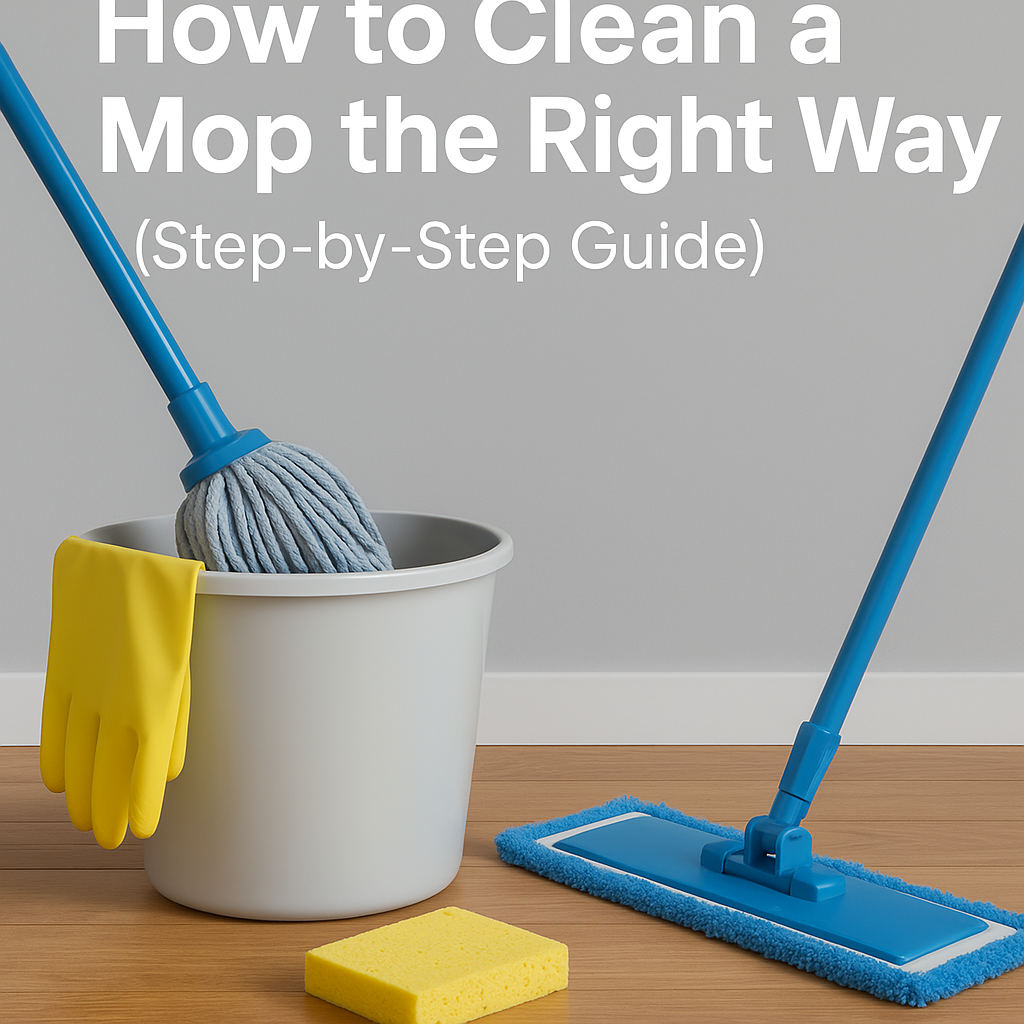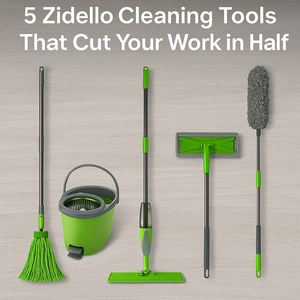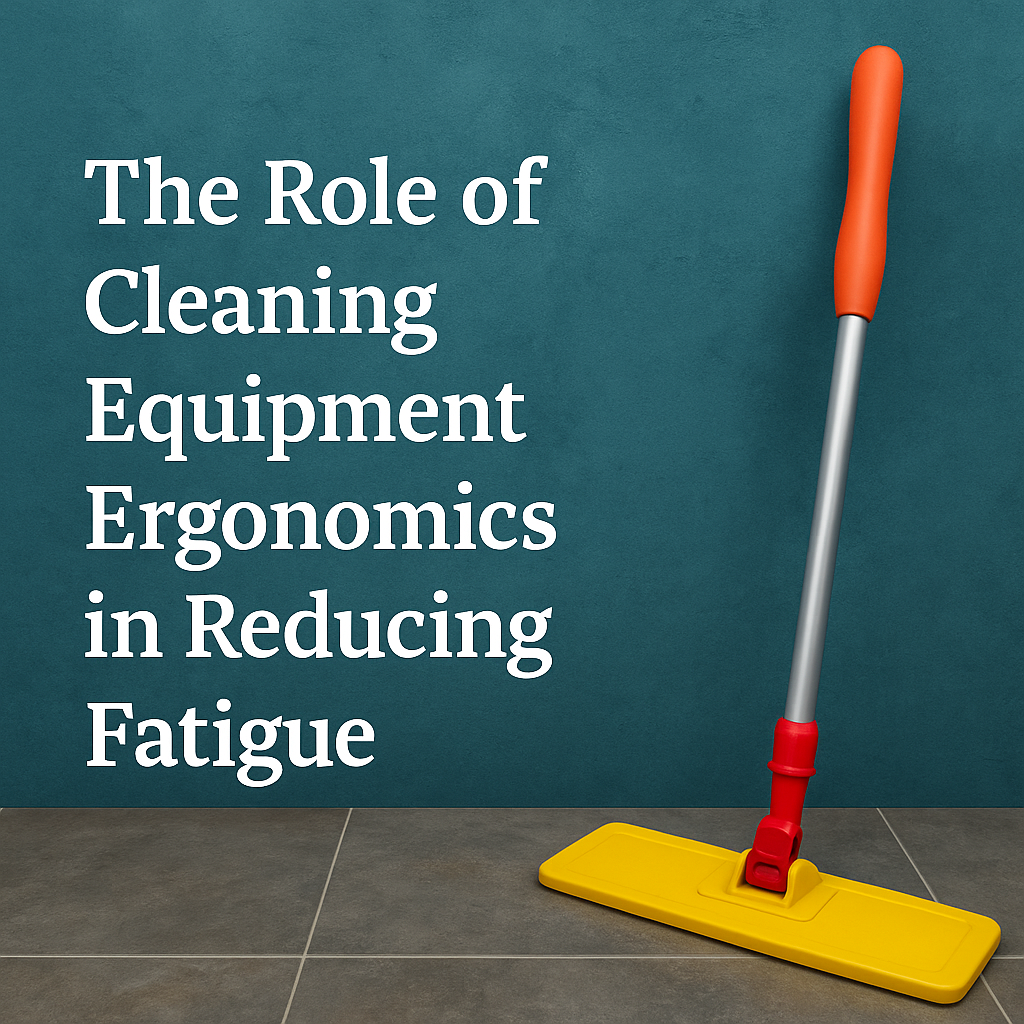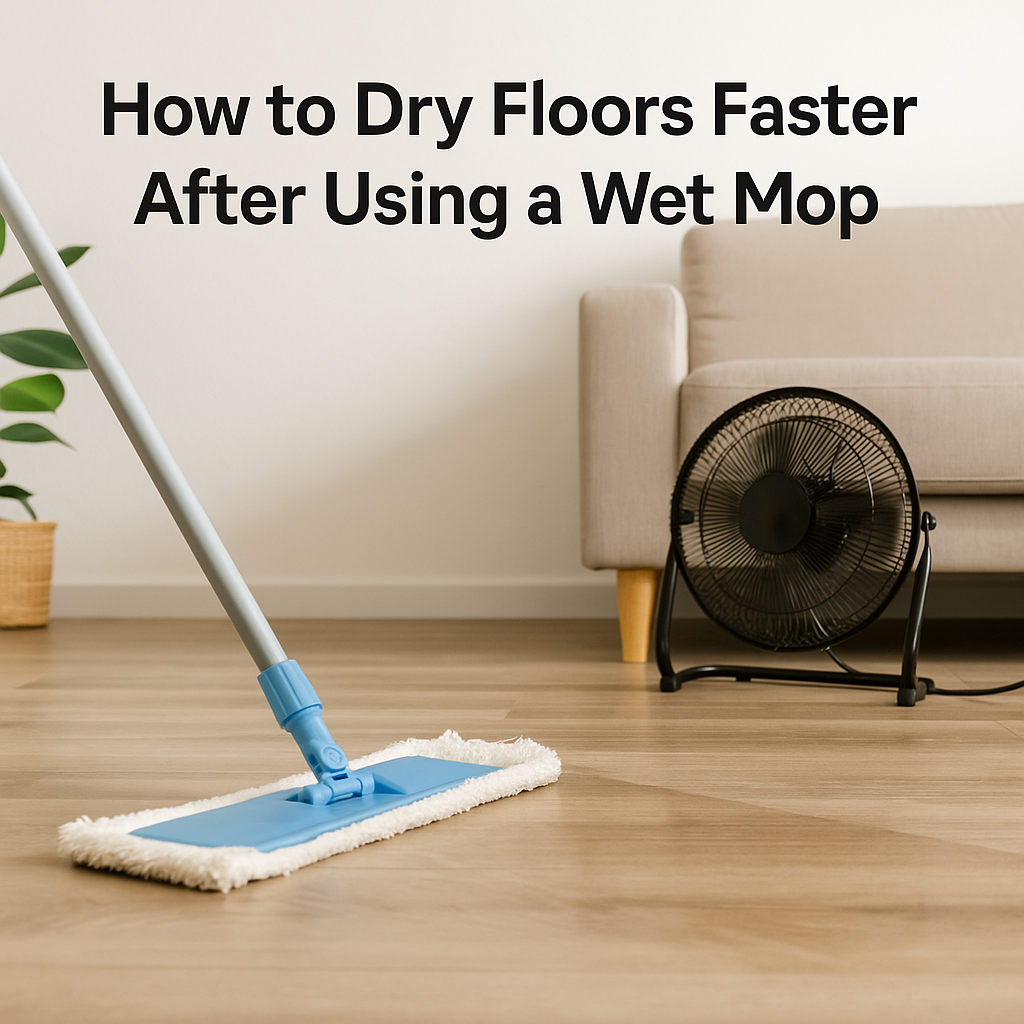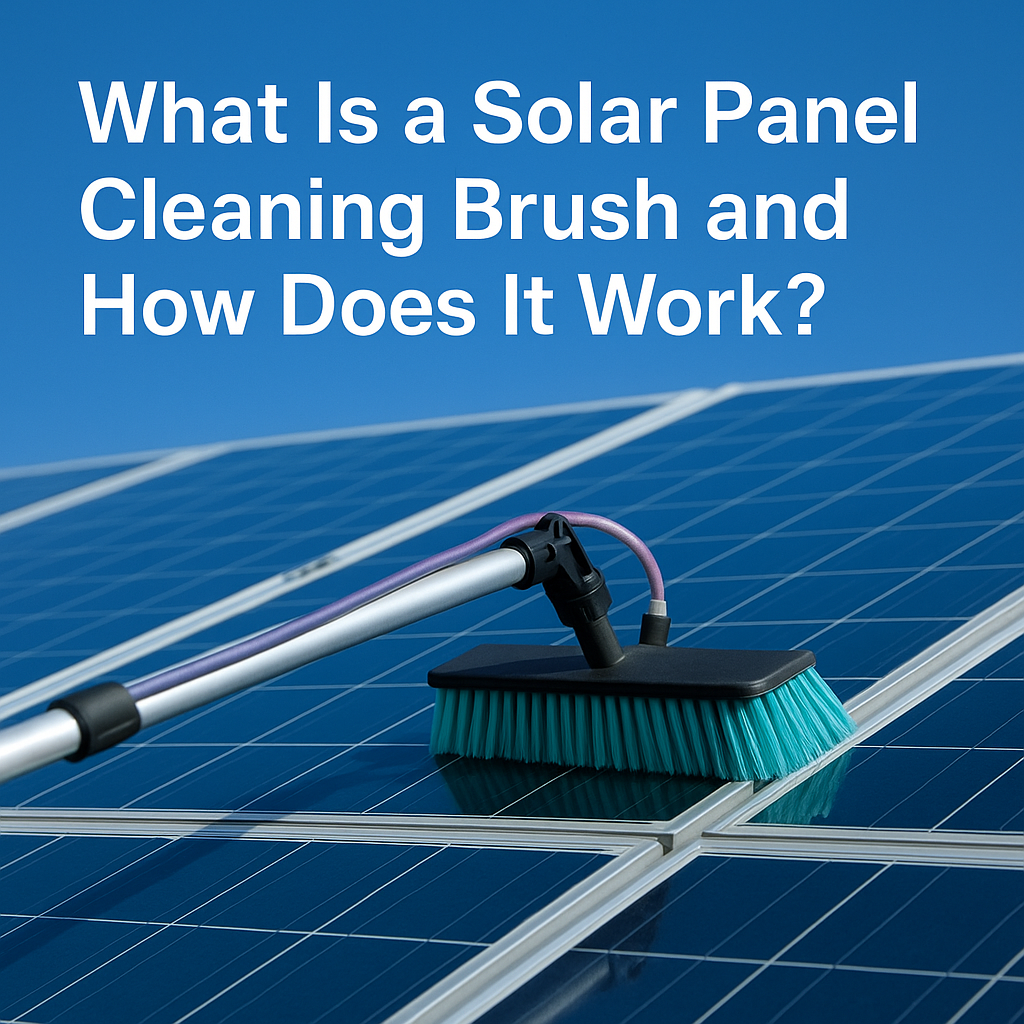How to Clean a Mop (7 Simple Steps)
Step 1: Rinse the Mop
Use hot water to rinse the mop head thoroughly until the water runs clear. This helps remove dirt, debris, and leftover cleaning solution.
If your mop was used on greasy or sticky surfaces, add a few drops of dish soap while rinsing.
Doubt: Can I use cold water? No, hot water helps loosen stuck-on dirt and sanitizes better.
Step 2: Wring It Out Completely
After rinsing, squeeze out as much water as possible using your hands or the mop’s wringer. Leaving it soaked can lead to a musty smell, bacteria, or mold.
Avoid tossing the wet mop in a corner or back into a bucket.
Doubt: How dry should it be? Until it's damp but not dripping.
Step 3: Let It Dry Properly
Hang the mop in a well-ventilated area, preferably in direct sunlight. Sunlight helps kill germs and speeds up drying.
No sunlight? Place it near a fan or open window.
Important: Don’t store your mop while it’s still damp.
Step 4: Deep Clean Every 3–4 Uses
Soak the mop head in a cleaning solution to kill bacteria and remove deep grime. Choose one of the following:
-
Vinegar Method: 1 cup white vinegar + 1 gallon hot water
-
Hydrogen Peroxide Method: ½ cup hydrogen peroxide + 1 gallon hot water
-
Bleach Method (for cotton only): ½ cup bleach + 1 gallon hot water
Soak for 10–15 minutes, then rinse and dry thoroughly.
Warning: Never use bleach on microfiber, sponge, or synthetic mop heads.
Step 5: Use the Washing Machine (If Washable)
Check the label on your mop head. If it’s machine washable, you can deep clean it with ease.
Put the mop head in a laundry bag or old pillowcase to protect it. Use hot water and mild detergent. NO fabric softener.
Once the cycle ends, air dry it completely. Never put a wet mop head back on the handle or in storage.
Note: Don’t machine-wash sponge or foam mop heads. It may damage them.
Step 6: Try the Dishwasher Method (For Some Mops)
Some mop heads can be cleaned in the dishwasher if they’re made of microfiber or cloth with plastic backings.
Place the mop head on the top rack. Pour white vinegar into the detergent compartment, then run a full hot cycle.
After the cycle, air dry the mop head fully before use.
Avoid: Using this method for mop heads with metal or sponge parts as it may ruin them.
Step 7: Check for Signs of Damage
Even clean mops wear out. A damaged mop won’t clean properly and can even spread dirt.
Replace the mop head if it:
-
Still smells bad after deep cleaning
-
Looks frayed or discolored
-
Feels slimy or stays damp
Tip: For regular use, replace your mop head every 2–3 months to keep cleaning effective.
How to Clean a Steam Mop (5 Simple Steps)
Step 1: Wash the Mop Pads After Every Use
Remove the mop pads as soon as you’re done. Wash them in the washing machine using mild detergent.
Avoid fabric softeners. They leave a coating that reduces how well the pad absorbs dirt.
You can also hand wash if needed, but make sure the pad is rinsed well and completely dried before reuse.
Step 2: Empty the Water Tank
Never leave leftover water sitting in the tank. It can cause mineral buildup or mildew.
After unplugging the mop, pour out all remaining water. Wipe the inside with a clean, damp cloth.
If possible, leave the tank cap off for a while to let the inside air out and dry.
Step 3: Wipe the Outer Surface
Once the mop is unplugged and cool, use a dry microfiber cloth to wipe down the body, handle, and base.
If there’s stuck-on dirt, use a slightly damp cloth. Just be sure not to let water drip into any openings.
Avoid spraying water or cleaners directly onto the mop body.
Step 4: Let the Mop Cool Down Before Storing
Steam mops heat up during use and need time to cool down.
After unplugging, wait 10–15 minutes for the mop to cool completely.
Don’t try to store it or touch hot parts too soon. It’s both unsafe and could damage the mop.
Step 5: Dry All Parts Before Storing
Moisture causes mildew, so make sure everything is dry.
The mop pads, tank, and body should be air-dried completely before you put the mop away.
Store it in an upright position in a dry area.
Tip: Don’t pack it into a closed space if anything still feels damp.
How to Clean a Sponge Mop (5 Simple Steps)
Sponge mops soak up liquid fast, but they can also trap bacteria and smell if not cleaned the right way. Follow these steps to keep yours fresh and effective:
Step 1: Rinse the Sponge Head Thoroughly
After each use, rinse the sponge under hot running water. Keep rinsing until all visible dirt and soap is gone.
Hot water helps break down residue and lightly sanitizes the sponge.
Tip: Pump the wringer up and down a few times while rinsing to flush out trapped grime.
Step 2: Soak in a Cleaning Solution
Fill a bucket or sink with hot water. Add a small amount of dish soap or white vinegar.
Let the sponge head soak for 10–15 minutes to break down buildup and kill bacteria.
If the mop smells bad, mix in baking soda (2–3 tablespoons) for deodorizing.
Step 3: Avoid Using Bleach
Bleach weakens sponge material and shortens its lifespan.
If deeper disinfection is needed, use hydrogen peroxide instead—½ cup in 1 gallon of hot water is enough.
Let it soak for 10 minutes, then rinse.
Step 4: Rinse Again and Wring It Out
After soaking, rinse the sponge again under hot water to remove any leftover solution.
Wring it out thoroughly until it's damp but not dripping.
This prevents mold and helps it dry faster.
Step 5: Let the Sponge Mop Dry Upright
Store the mop in a standing position in a well-ventilated area.
Let air flow around the sponge so it dries completely.
Avoid: Storing it in closed cabinets or with the sponge touching the floor or wall while still damp.
What to Remember When Cleaning a Mop (7 Key Points)
-
Always rinse your mop with clean hot water right after use to remove dirt and cleaning chemicals before they settle in.
-
Disinfect the mop head at least once a week by soaking it in a bucket of hot water mixed with bleach or vinegar to kill germs and odors.
-
Use different mop heads for different areas (like kitchen, bathroom, and living room) to prevent bacteria from spreading across surfaces.
-
If your mop head is machine washable, run it in a hot wash cycle with regular detergent. Avoid the use of fabric softener as it can reduce absorbency.
-
Let the mop air dry fully after every use. Hang it in a well-ventilated spot to avoid mold and musty smells.
-
Don’t forget the handle. Wipe it down regularly with a disinfectant, especially after each use.
-
Replace your mop head every 2–3 months or sooner if it smells bad, looks frayed, or stops cleaning effectively.
How to Store Mops Safely
-
Dry means bone dry. Even a little moisture can cause mildew or that musty smell. If it’s humid where you live, place it near a fan or under direct sunlight to speed up drying. Never store a mop while it’s damp.
-
Keep the mop in a standing position with the head off the ground. This stops it from picking up dirt and allows air to circulate around the mop fibers, helping it stay fresh between uses.
-
If your mop allows it, detach the mop head and hang it up using a hook or drying rack. Don’t stuff it in a plastic bag or bucket as it traps moisture and encourages bacterial growth. Hanging it ensures proper air drying from all sides.
-
Pick a cool, ventilated spot like a utility closet, hallway rack, or even an open shelf. Avoid storing your mop in damp places like under the sink, garages, or closed laundry rooms because those areas stay humid and shorten your mop’s life.
Conclusion
Cleaning your mop properly is just as important as cleaning your floors. A dirty mop spreads bacteria and reduces cleaning quality. By following these steps for wet mops, steam mops, and sponge mops, you’ll keep your tools fresh, safe, and long-lasting.
At Zidello, we offer durable, high-quality cleaning mops and accessories to help you maintain a cleaner home or workspace. Whether you need replacements or want to upgrade your tools, we’ve got what you need.
Visit us today to get the best tools for a cleaner tomorrow.
FAQs
How can I make my mop look fresh again?
Soak the mop head in a bucket of hot water with white vinegar or a spoon of baking soda. Let it sit for 15–20 minutes to loosen dirt and kill odor-causing bacteria. Rinse thoroughly, then dry it in sunlight for a clean, refreshed look.
What’s the best way to clean a really dirty mop?
First, rinse it well under hot running water to remove loose grime. Then soak it in a mixture of vinegar or hydrogen peroxide for deep cleaning. Depending on the mop type, either wash it by hand or toss it in the machine. Make sure to dry it fully before putting it away.
Where should I throw away dirty mop water?
Always pour dirty mop water down the toilet. Avoid using the sink—it can clog your pipes and leave behind residue. After dumping, flush with clean water to avoid buildup.
Can I use vinegar when mopping floors?
Yes, vinegar is a safe and natural disinfectant. Mix 1 cup of white vinegar with 1 gallon of warm water for mopping. It’s great for tile, vinyl, and laminate floors. Just don’t use it on stone surfaces like marble or granite—it can damage them.
Is bleach safe for cleaning mop heads?
Only use bleach if your mop head is cotton or microfiber. Never use bleach on sponge mops or synthetic materials—it breaks them down quickly. If in doubt, stick with vinegar or hydrogen peroxide for safe cleaning.


